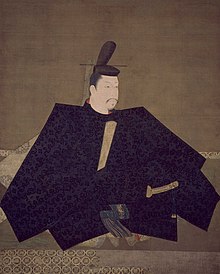1185 ⟶ Kamakura Shogunate Establishes Political Dominance
Beginning in this year the Kamakura shogunate deprives the e...Year
1185
1192
1331
1336
1392
1603
⚔️ Kamakura Shogunate Establishes Political Dominance
Beginning in this year the Kamakura shogunate deprives the emperor of Japan of political power.⟶

FeudalismShogunateEmperorKamakura PeriodMilitary DictatorshipPolitical PowerCivil War
 Japan
Japan🛡️ Minamoto no Yoritomo Appointed Shōgun
Minamoto no Yoritomo is appointed Sei-i Taishōgun, "barbarian-subduing great general", shōgun for short, the first military dictator to bear this title.⟶

FeudalismShogunateMilitary DictatorshipKamakura PeriodPolitical TransitionJapanese HistorySamuraiGovernance
 Japan
Japan⚔️ Kamakura Shogunate's Decline and Imperial Restoration
1333: The Genkō War in Japan deposes the Kamakura Shogunate, ending the Kamakura Period and beginning the Kenmu Restoration under Emperor Go-Daigo.⟶

Kamakura PeriodShogunateCivil WarPolitical TransitionFeudalism
 Japan
Japan⚔️ Muromachi Shogunate Established, Nanboku-chō Period Begins
The Kenmu Restoration ends and the Muromachi period begins in Japan; start of the Nanboku-chō period.⟶

ShogunateCivil WarFeudalismEmperorMilitary Rule
 Japan
Japan👑 Emperor Go-Kameyama Abdicates, Ending Nanboku-chō Period
Emperor Go-Kameyama of Japan abdicates in favor of rival claimant Go-Komatsu, in order to end the Nanboku-chō period of conflict between the Northern and Southern imperial courts.⟶

EmperorImperial CourtCivil WarAbdicationPolitical TransitionMiddle AgesGovernance
 Japan
Japan🏯 Tokugawa Ieyasu Becomes Shōgun, Founding the Tokugawa Shogunate
Tokugawa Ieyasu takes the title of shōgun, establishing the Tokugawa shogunate. This begins the Edo period, which will last until 1868.⟶

ShogunateEdo PeriodTokugawa IeyasuFeudalismSamuraiJapanese HistoryPolitical TransitionCentralizationMilitary Dictatorship
 Japan
Japan